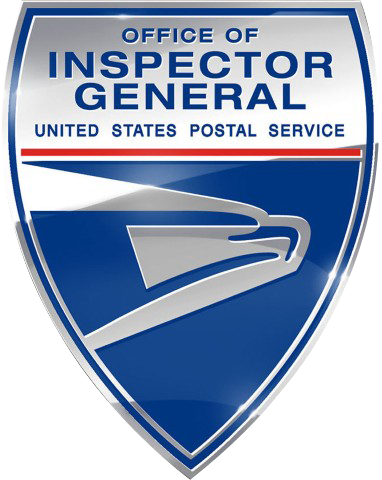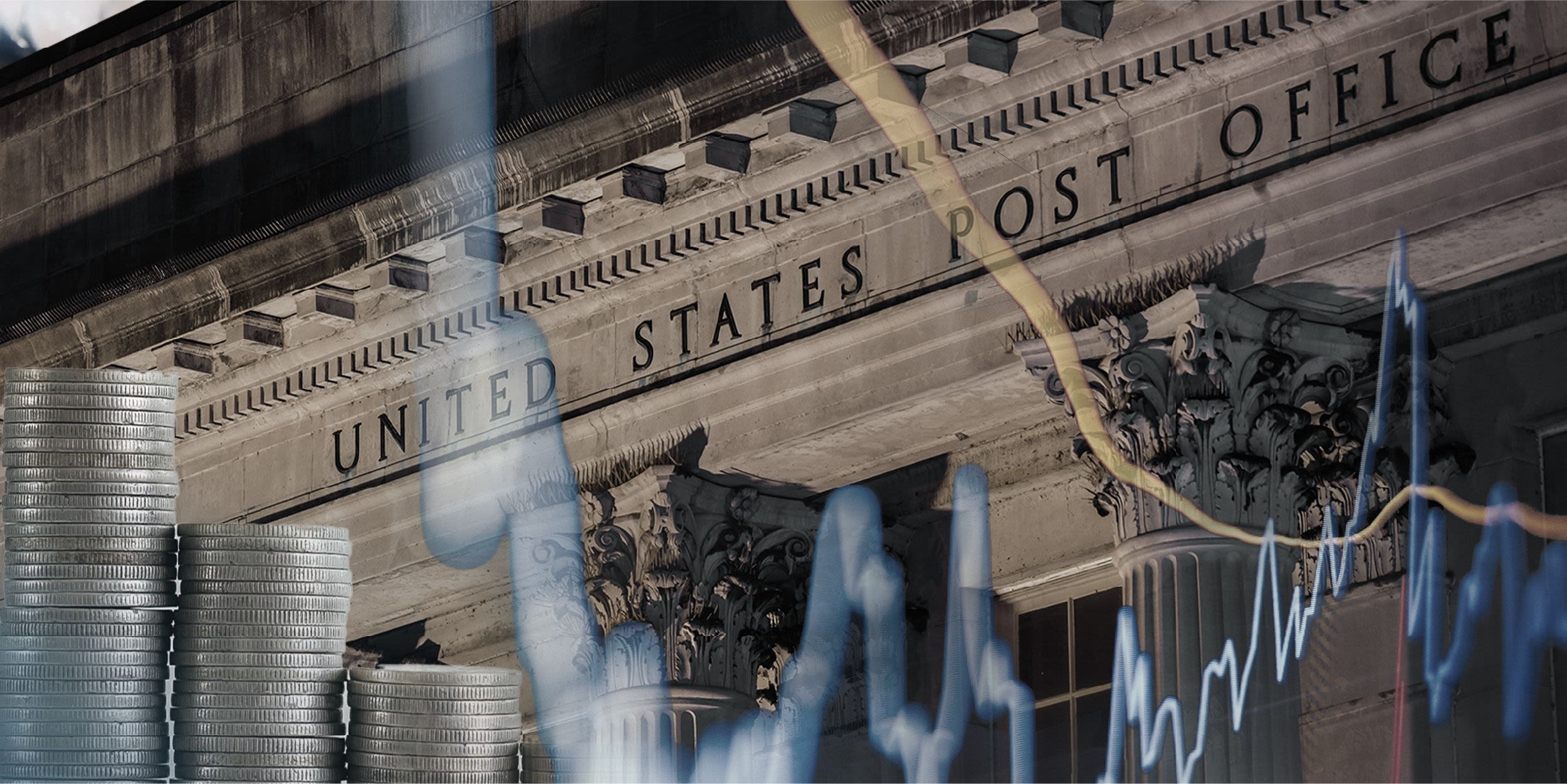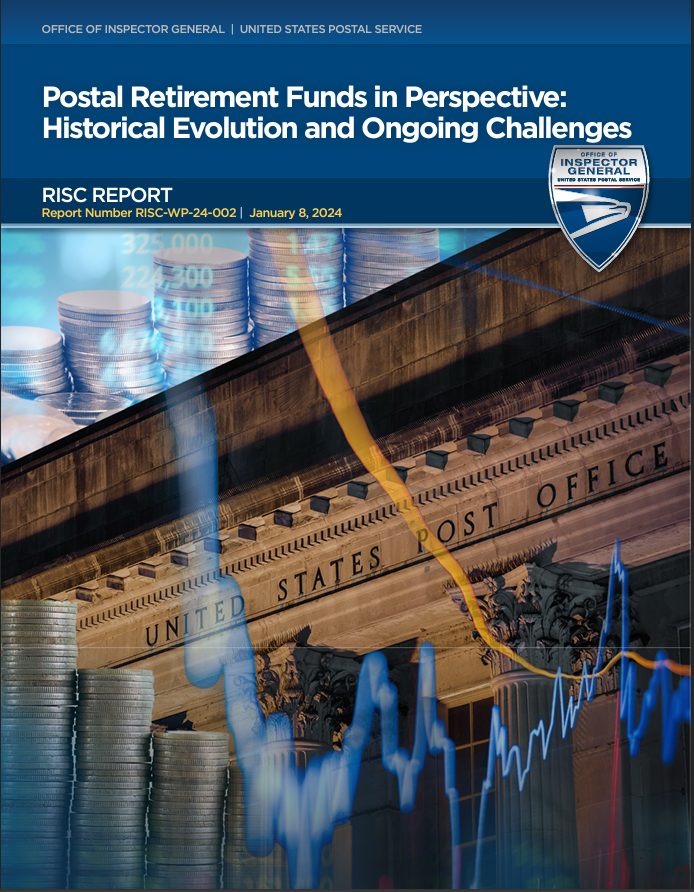Postal Retirement Funds in Perspective: Historical Evolution and Ongoing Challenges
- Research and Insights Solution Center -
United States Postal Service Office of Inspector General


Postal workers are a vital and integral part of the U.S. Postal Service. They pick up letters, move mail, and process packages to deliver to every address in the nation.
USPS employs over half a million career employees and provides them with benefits upon retirement. With over 700,000 retirees currently relying on its pensions, safeguarding the Postal Service’s retirement funds is critical to both the agency’s finances and operations.

Career postal employees participate in one of two pension programs for federal workers: the Civil Service Retirement System (CSRS) or the Federal Employees Retirement System (FERS). The Postal Service Retiree Health Benefits Fund (PSRHBF) also funds the agency's share of health insurance premiums for postal retirees.
Most federal agencies receive annual congressional appropriations to contribute towards CSRS and FERS. The Postal Service does not. Instead, it's required to pay retirement contributions with agency revenue.
USPS's retirement costs are significant, totaling $10 billion in 2023 alone. All three of its retirement-related funds have an unfunded liability, which means current funds don't fully cover future amounts owed to retirees. This is partially due to a complex legislative history that's given USPS more retirement liability over the years (below, right: "USPS Liabilities").
These additional responsibilities aren't required of other federal agencies (below, left: "Other Federal Agencies' Liabilities").
1920
The Civil Service Retirement System (CSRS) originated in 1920 and provided retirement, disability, and survivor benefits for most civilian employees in the federal government...
1920
...This includes the Postal Service, which was known as the Post Office Department at the time.
1969
Congress established a CSRS funding model, including a 7% employee contribution and a 7% employer contribution. Employer contributions were funded by congressional appropriations for both the Post Office Department and the rest of the federal government. The U.S. Treasury was responsible for funding additional CSRS costs not fully covered by employee and employer contributions.
1971
The Postal Reorganization Act (PRA) turned the then-Post Office Department into an independent agency called the U.S. Postal Service. The PRA required USPS to cover its costs through revenue — including its employer contributions to CSRS...
1971
...Meanwhile, other federal agencies continued to receive congressional appropriations to fund their employer contributions.
1974
In 1974, a new law made USPS responsible for any unfunded CSRS liability arising from employee pay increases. This new annual amortization payment meant USPS would pay a larger share of CSRS costs than the rest of the federal government.
Other agencies' amortization payments would be funded by the U.S. Treasury.
1987
The Federal Employees Retirement System (FERS) was established to provide retirement benefits to federal employees (including USPS employees) who entered federal service in 1984 and later.
1990
The Omnibus Budget Reconciliation Act of 1990 made USPS responsible for unfunded CSRS liabilities created by cost-of-living adjustments (COLA) to retiree benefits. This meant the Postal Service must pay CSRS employer contributions, amortization payments related to pay raises, and a new set of amortization payments related to COLAs.
Other federal agencies didn't have to cover additional payments beyond employer contributions, which continued to be funded by congressional appropriations.
2003
The Postal Civil Service Retirement System Funding Reform Act of 2003 made several key changes to USPS’s CSRS funding. Responsibility for prior military service was transferred from the U.S. Treasury to the Postal Service.
However, other federal agencies were not given this additional responsibility...
2003
All previous amortization payment schedules were cancelled, and a new schedule was established to pay off any remaining unfunded CSRS liability...
2003
And the Postal Service’s employer contribution was increased from 7% to 17.4%.
The reform also changed the way OPM would calculate USPS’s CSRS obligations. CSRS liability would be calculated on a dynamic basis that made USPS responsible for projected future pay increases, inflation, and interest rates.
Meanwhile, the rest of the federal government continued to use a static basis that did not incorporate pay raises or inflation into their calculations.
2006
In 2006, the Postal Accountability and Enhancement Act of 2006 (PAEA) eliminated USPS's CSRS employer contribution and returned responsibility for prior military service to the U.S. Treasury.
PAEA also created the Postal Service Retiree Health Benefits Fund (PSRHBF) and made USPS responsible for the government portion of its retiree health premiums. Initial PSRHBF funding came primarily from a $17 billion CSRS surplus. After that, USPS was expected to pre-fund an additional $50 billion across 10 annual payments by 2016.
Meanwhile, OPM used congressional appropriations to pay retiree health premiums for other agencies.
2022
Over the years, the Postal Service advocated for reform to its CSRS responsibilities and its PSRHBF prefunding obligation. PAEA’s PSRHBF-prefunding requirement coincided with a significant decline in mail volume and revenue, and USPS made only four of its 10 required payments before defaulting on the rest.
The Postal Service Reform Act of 2022 (PSRA) repealed the prefunding requirement and forgave billions in unpaid PSRHBF payments. However, as of the writing of this project, adjustments to the CSRS allocation haven't yet occurred. USPS continues to seek administrative reform to CSRS as part of its Delivering for America 10-year plan.
The Postal Service also faces challenges beyond the funding responsibilities outlined above: it has no control over levers that might lower retirement-related costs or generate higher fund balances. For instance, USPS doesn't control annual cost-of-living-adjustments (COLAs), the funds’ investment strategy, actuarial assumptions, or contribution rates.
Congressional action would be required to give it more control over any of these factors.
For example, USPS's retirement-related funds may only be invested in Treasury securities, which are stable investments that typically generate lower rates of return compared to other common kinds of investments.
Investment in low-risk, low-return Treasury bonds was a contributing factor in USPS’s unfunded retirement liabilities, which more than doubled from $50 billion in FY 2007 to $119 billion in FY 2022. Note: Retirement liabilities can vary depending on the actuarial assumptions underlying the calculations, as discussed in previous OIG work.
If the Postal Service had been allowed to diversify its investments from its inception, it could have had an aggregate surplus each year. Prior work by the OIG found that an investment portfolio comprising 60% stocks and 40% bonds would have resulted in aggregate surpluses — including a surplus of $963 billion in FY 2021. Diversifying its cash investment portfolio to invest in longer-term Treasuries would also enable USPS to maintain funds for other operational initiatives.
Inflation rates also present a number of complex challenges for the Postal Service. Higher-than-normal inflation extending through FY 2022 hurt the value of USPS’s retirement funds, resulting in negative real returns on its investments in recent years.
This chart compares CSRS's actual historical interest rate against its real interest rate (which is the interest rate after accounting for inflation). Interest rates for FERS and PSRHBF have tracked closely to CSRS's rate. The actual interest rate on USPS's CSRS investment fund peaked in the mid-1980s and declined steadily since then.
Over the past few decades, inflation eroded the agency's gains on its investment and slowed its investment return. USPS's real return (that is, its interest rate minus the rate of inflation) was often several points below the fund's interest rate.
In FYs 2021 and 2022, inflation exceeded the interest rate on USPS's investments, resulting in a negative real return both years.

Inflation also affected COLAs which, in turn, impacted USPS's retirement funds. For example, the majority of its employees receive biannual wage increases that are tied to COLAs. Since the agency pays employer contributions to FERS as a direct percentage of wages, higher COLAs on wages also increase retirement costs.

Our white paper provides more details on COLA's impacts on retiree pension funds and highlights USPS's limited ability to mitigate those impacts.
More changes are on the horizon for the Postal Service's retirement-related liabilities. In addition to providing pensions to its retirees, the agency is responsible for paying a portion of its retirees' health premiums. USPS payments for those premiums will need to begin soon.
Currently, USPS doesn't incur costs for retiree health premiums because those premium payments come from the PSRHBF. It hasn't contributed to PSRHBF since 2010, when it began to default on its payments.

USPS expects the PSRHBF to be depleted in FY 2031. At that point, it will have to pay for premiums annually using money generated from product sales.

This chart shows USPS's projected annual retiree health costs over the next 10 years.
USPS expects the PSRHBF to be depleted by FY 2031. Annual costs may rise to $6 billion following the depletion of PSRHBF — and may rise even further the year after that. This means its annual costs for retiree health benefits alone may rise from $0 in FY 2023 to more than $6 billion per year in less than 10 years.
In order to cover these costs, the Postal Service will make top-up payments beginning in FY 2026 and pay-as-you-go payments once the PSRHBF is depleted. Both top-up payments, based on the difference between annuitant premiums and claims costs, and pay-as-you-go payments must come from USPS revenue.
The addition of retiree health benefit costs will exacerbate USPS's already rising pension requirements. It estimates the combined retirement-related annual costs may nearly double between FYs 2023 and 2033. These increased costs could divert funding away from other necessary priorities such as capital investments — compounding a problem of chronic underinvestment that has impacted USPS in recent decades.
This chart shows the Postal Service's projected annual costs for RHBF, CSRS, and FERS contributions combined.
As noted earlier, RHBF contributions aren't projected to begin until 2026. However, USPS predicts its retiree health benefit costs will rise sharply in FY 2031 when funding for RHBF becomes depleted.
CSRS contributions will add to these costs...
...but FERS contributions make up the largest percentage of future retirement costs.
The Postal Service predicts its combined retirement-related costs will be more than $10 billion in 2024...
...increase sharply to $14.5 billion when funds in RHBF are depleted...
...and balloon to $18 billion in less than ten years.
The Postal Service is unique in its congressionally-legislated mandate to draw on revenue to fund its pension and health benefits liabilities. Despite its growing obligations and impending health premium payments, the agency is constrained in its ability to control factors that could otherwise improve its financial position. Rising retirement costs may siphon funds away from capital investments, compromise future employees' retirement funds, or present further challenges to USPS's financial viability — or all three. It is therefore important for postal stakeholders and policymakers to consider potential strategies to mitigate future costs, including options previously noted by the OIG.
The futures of our postal workers depend on it.
Additional Resources
Historical Analysis of USPS Retirement Fund Returns
Published in 2023, this OIG white paper analyzes the historical fund returns of the Postal Service’s retirement investments and determines the potential investment income that could have been earned from different investment strategies.
Postal Service Investment and Interest Rate Risk
This OIG audit report assesses the Postal Service’s investment of its cash balances and identifies opportunities to improve investment and borrowing strategies and to reduce interest rate risk.
Options to Reduce Unfunded Retirement Liabilities
This 2020 audit report explores two options for addressing unfunded retirement liabilities, including changing actuarial assumptions and generating higher returns on CSRS, FERS, and RHB assets.
Contact Us
For media inquiries, please email press@uspsoig.gov.













